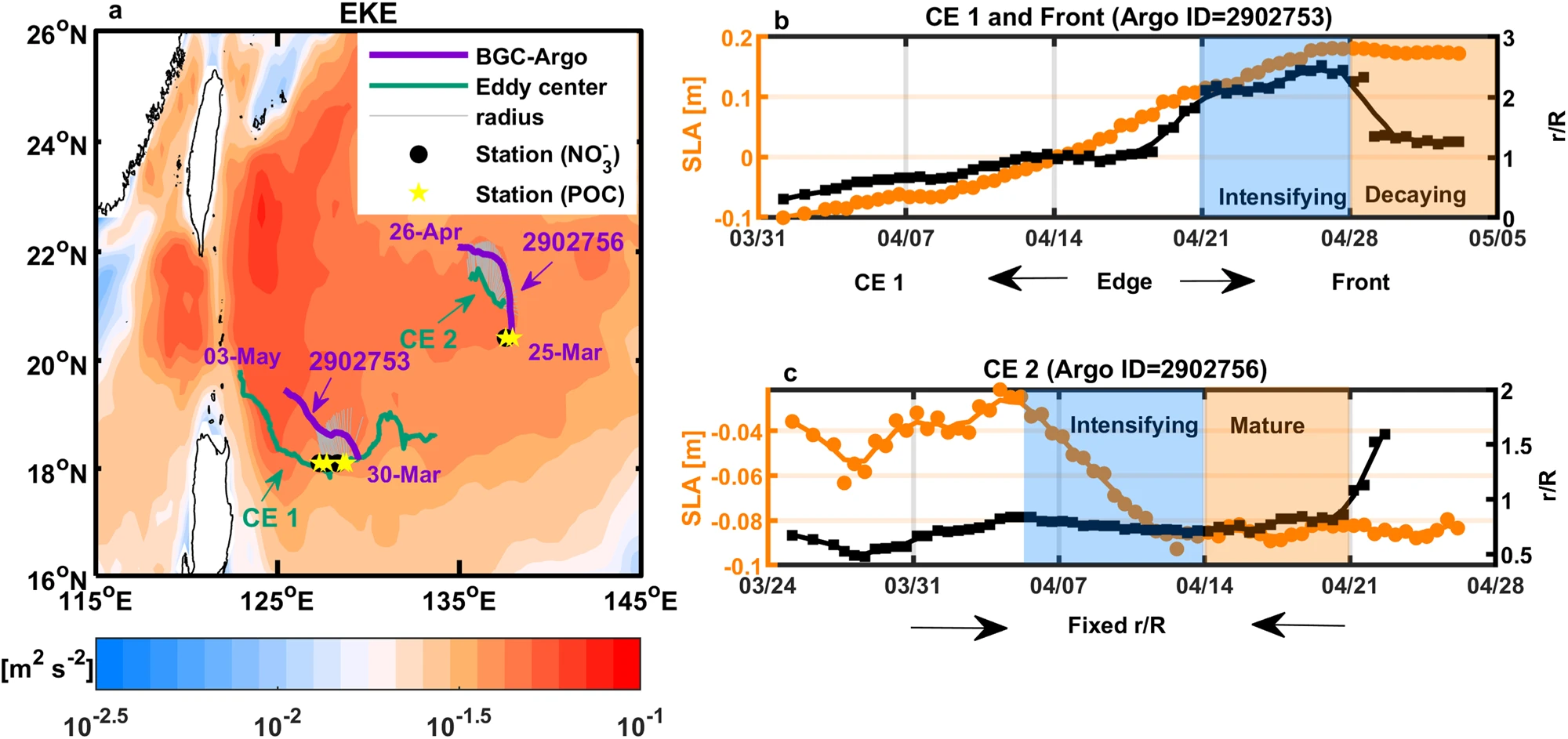Efficient biological carbon export to the mesopelagic ocean induced by submesoscale fronts
Mingxian Guo, Xiaogang Xing, Peng Xiu, Giorgio Dall’Olmo, Weifang Chen & Fei Chai
Published in Nature Communications, January 2024
Oceanic submesoscale processes are ubiquitous in the North Pacific Subtropical Gyre (NPSG), where the biological carbon pump is generally ineffective. Due to difficulties in collecting continuous observations, however, it remains uncertain whether episodic submesoscale processes can drive significant changes in particulate organic carbon (POC) export into the mesopelagic ocean. Here we present observations from high-frequency Biogeochemical-Argo floats in the NPSG, which captured the enhanced POC export fluxes during the intensifying stages of a submesoscale front and a cyclonic eddy compared to their other life stages. A higher percentage of POC export flux was found to be transferred to the base of mesopelagic layer at the front compared to that at the intensifying eddy and the mean of previous studies (37% vs. ~10%), suggesting that the POC export efficiency was significantly strengthened by submesoscale dynamics. Such findings highlight the importance of submesoscale fronts for carbon export and sequestration in subtropical gyres.

Fig. a The trajectories of BGC-Argo floats (WMO numbers 2902753 and 2902756) in purple and the trajectories of the center of mesoscale eddies (identified as cyclonic eddy 1 (CE 1) and cyclonic eddy 2 (CE 2)) in green. The gray lines indicate the eddy radius. The background color is the mean eddy kinetic energy (EKE (m2 s-2)) from 1993 to 2020. Black dots and yellow pentagrams represent in-situ sampling locations of nitrate (NO3-) and particulate organic carbon (POC), respectively. b Along-track sea level anomaly (SLA; m) in orange and the relative distance from the center of CE 1 normalized by eddy radius, r/R, in black for float 2902753. The blue and orange areas correspond to the intensifying and decaying stages of the submesoscale front, respectively. c The same as b but for float 2902756 in CE 2. In c, between the two vertical dashed lines, the float was at a relatively fixed r/R ~ 0.7. The blue and orange areas correspond to the intensifying and mature stages of CE 2. Source data are provided as a Source Data file.
Guo, M., Xing, X., Xiu, P. et al. Efficient biological carbon export to the mesopelagic ocean induced by submesoscale fronts. Nat Commun 15, 580 (2024). https://doi.org/10.1038/s41467-024-44846-7